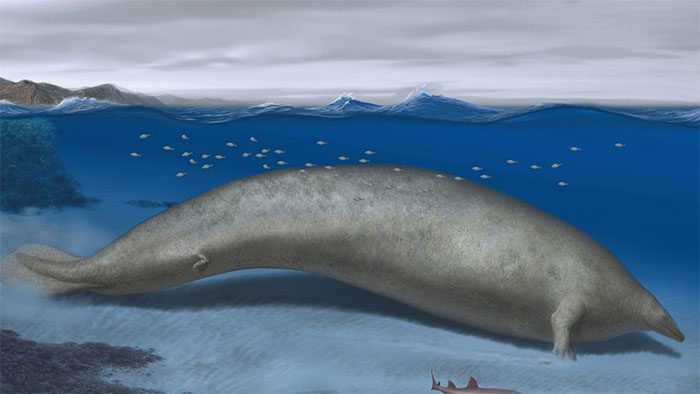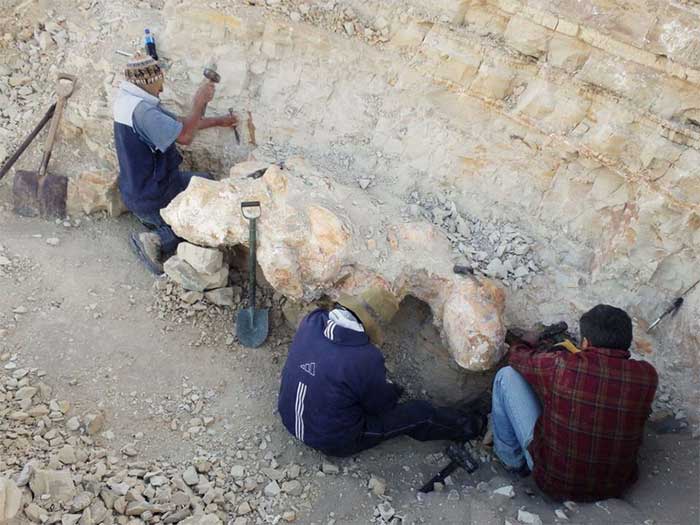Researchers estimate that this creature measured approximately 20 meters in length and weighed up to 340 tons, a mass that surpasses any other known animal on Earth.
On Wednesday, scientists announced the discovery of a whale fossil excavated in Peru, named Perucetus colossus, which lived around 38-40 million years ago. This creature bore some resemblance to a manatee and weighed more than the blue whale, the heaviest animal on Earth. Its scientific name translates to “giant whale of Peru.”
“The defining characteristic of this animal is undoubtedly its immense weight, indicating that the evolutionary process can produce creatures with traits that exceed our imagination,” said Giovanni Bianucci, a paleontologist from the University of Pisa in Italy and the lead author of the study published in the journal Nature.
It is estimated that the minimum mass of the Perucetus species is 85 tons, while its average weight is around 180 tons. The largest known blue whale weighs about 190 tons and measures 33.5 meters in length.
In comparison, the long-necked dinosaur Argentinosaurus, which lived approximately 95 million years ago in Argentina, is classified as the heaviest dinosaur, estimated to weigh around 76 tons.

Reconstruction of the Perucetus species.

Scientists excavating a vertebra fossil of the Perucetus.
The fossil of a Perucetus individual was unearthed in the coastal desert of southern Peru—a region rich in whale fossils—comprising 13 vertebrae, 4 ribs, and 1 pelvic bone. Archaeologists noted that the bone structure of this species is extremely dense and robust. This characteristic, known as pachyosteosclerosis, is not found in marine mammals living in the ocean such as whales and dolphins but is present in the order Sirenia.
Its bone mass alone is estimated to be between 5 to 8 tons, at least double that of a blue whale.
“Its bulky, cumbersome body may resemble that of a manatee rather than a whale. Among living manatee species, due to its gigantic size and potentially similar lifestyle, Perucetus is reminiscent of the Steller’s sea cow, which was discovered in 1741 and subsequently driven to extinction by humans,” Bianucci stated.
The absence of skull bones or teeth makes it challenging to interpret the diet and lifestyle of Perucetus. Researchers suspect that Perucetus was not an active predator but rather an organism foraging near the seafloor of shallow coastal waters. Its diet may have consisted of mollusks and small crustaceans found in sandy bottoms.
“Given its massive skeleton and likely very bulky body, this animal was certainly a slow swimmer. To me, at this stage of our understanding, it resembles a gentle giant, somewhat akin to an oversized manatee,” said Olivier Lambert, a paleontologist at the Royal Belgian Institute of Natural Sciences.
Whales evolved over 50 million years ago from land-dwelling mammals, hoofed animals about the size of a medium-sized dog. Perucetus still retains remnants of hind limbs.
Features of the skeleton suggest that Perucetus is related to Basilosaurus, another whale species of similar length but smaller size. However, Basilosaurus was a predator with a streamlined body, strong jaws, and large teeth.





















































